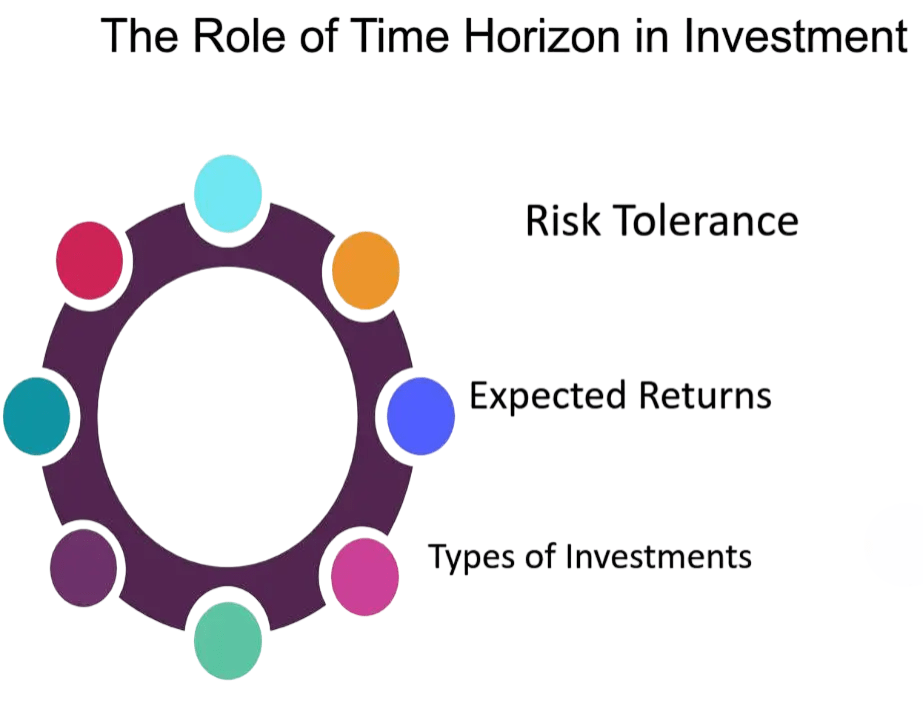
- Why Investment Strategy Matters
- Define Financial Goals
- Understand Risk Tolerance
- Choose Asset Allocation
- Time Horizon Planning
- Active vs Passive Strategy
- Diversification Techniques
- Review and Rebalance
- Tax Planning Considerations
- Tools and Resources
- Common Pitfalls
- Final Thoughts
Why Investment Strategy Matters
Investing without a clear strategy is akin to navigating without a map, the journey can be uncertain, inefficient, and fraught with unnecessary risks. An investment strategy is a carefully thought-out plan that guides investors in allocating their resources to meet financial goals while managing risks in a structured way. It matters because it aligns investment decisions with individual circumstances, market realities, and long-term objectives. A sound strategy helps avoid emotional decisions driven by market volatility or hype, improving the chances of consistent, favorable outcomes. Investment strategies provide clarity on what to invest in, how much to allocate to various asset classes, when to enter or exit positions, and how to adapt to changing market conditions. They act as a roadmap, ensuring investments are purposeful and not reactive. Without strategy, investors risk making impulsive moves leading to losses or missed opportunities. Moreover, an effective strategy takes into account tax implications, liquidity needs, risk appetite, and time horizon, balancing growth potential with capital preservation. It also fosters discipline, patience, and periodic evaluation essential traits for navigating the unpredictable financial markets.
Define Financial Goals
The foundation of any investment strategy lies in clearly defined financial goals. Goals provide direction and purpose for investing, helping to determine how much to invest, the types of investments to choose, and the timeline for each objective. Financial goals can be grouped into three timeframes, each serving a different purpose in a person’s financial journey. Short-term goals usually cover 1 to 3 years and focus on immediate needs. These include building an emergency fund, saving for a vacation, or planning to buy a car. As financial wishes grow, medium-term goals come into play. These goals, which fall within a 3 to 7 year timeframe, include larger objectives like buying a home, seeking higher education, or starting a business. Long-term goals are the most significant in financial planning. They extend beyond 7 years and focus on key milestones like retirement planning, building wealth, and possibly creating a legacy through passing on wealth to the next generation. By recognizing and addressing these different goal categories, individuals can create a well-rounded approach to managing their finances, balancing current needs with future success.
Why Goals Matter
Specific, measurable, achievable, relevant, and time-bound (SMART) goals help tailor investment choices. For example, a long-term goal like retirement can tolerate higher risk and volatility, enabling more equity exposure. Conversely, short-term goals require capital preservation, favoring fixed income or liquid assets. Defining goals also aids in setting realistic return expectations and determining required savings rates. When goals are unclear, investment decisions can become aimless, leading to underperformance or premature liquidation.
Interested in Obtaining Your Data Science Certificate? View The Data Science Online Training Offered By ACTE Right Now!
Understand Risk Tolerance
Risk tolerance refers to the degree of variability in investment returns an investor is willing and able to withstand. Understanding risk tolerance is vital for making informed decisions on asset allocation, security selection, and portfolio management.
- Age: Younger investors often have higher risk tolerance due to a longer time horizon to recover from losses.
- Income and Financial Stability: Individuals with stable, high income and emergency reserves can afford to take greater risks.
- Investment Experience: Experienced investors may better handle market volatility.
- Psychological Disposition: Comfort levels with uncertainty and loss vary widely between individuals.
- Goals and Time Horizon: Aligning investment strategies with financial goals is essential for determining appropriate risk levels.
- Assessing Risk Tolerance: Tools like questionnaires, analysis of past investment behavior, and psychological profiling help categorize investors as conservative, moderate, or aggressive.
Failing to account for risk tolerance can lead to emotional decision-making during market downturns, impacting long-term investment success.
To Explore Data Science in Depth, Check Out Our Comprehensive Data Science Online Training To Gain Insights From Our Experts!
Choose Asset Allocation
Asset allocation refers to the strategic process of dividing investments among various asset categories such as equities, bonds, real estate, and cash. It plays a critical role in shaping portfolio returns and managing investment risk.
Importance of Asset Allocation: Studies indicate that asset allocation is responsible for approximately 80–90% of the variation in long-term portfolio performance. A well-crafted allocation aligns risk and reward with the investor’s goals and risk tolerance.
- Equities: Provide potential for high growth but come with increased volatility.
- Fixed Income: Bonds offer steady income and help mitigate overall risk.
- Cash and Cash Equivalents: Ensure liquidity and capital preservation.
- Alternative Investments: Include assets like real estate, commodities, and hedge funds, offering diversification benefits.
Strategy
- Strategic Asset Allocation: Establishes fixed investment proportions aligned with long-term financial goals and risk tolerance. Periodic rebalancing helps maintain the original allocation.
- Tactical Asset Allocation: Involves temporary shifts in allocations based on market trends or economic signals, aiming to enhance returns while adhering to the core strategy.
- Dynamic Asset Allocation: Continuously modifies asset distribution in response to evolving investor goals, market conditions, and risk assessments. Highly adaptive to change.
Time Horizon Planning
Time horizon is an important factor in shaping investment strategy. It reflects how long an investor plans to hold their investments before needing to access their funds. The approach changes significantly based on different time frames. For short-term horizons (0-3 years), investors usually focus on preserving their capital and maintaining liquidity. They often use low-risk options such as money market funds and short-term bonds.

Medium-term horizons (3-7 years) require a balanced strategy. Investors blend stocks and fixed income to foster growth while managing risk. Those with long-term horizons (7+ years) can often take on more equity risk. This allows them to aim for higher returns and better handle market fluctuations. As time goes on, portfolios are adjusted through a glide path approach. This means gradually moving from higher-risk to lower-risk assets. This strategy helps protect accumulated wealth and reduces the risk of having to sell during market downturns.
Gain Your Master’s Certification in Data Science Training by Enrolling in Our Data Science Master Program Training Course Now!
Active vs Passive Strategy
When considering investment strategies, investors must choose between active and passive approaches. Each has its own benefits and challenges. Active investing means frequently trading securities to beat market benchmarks. This requires a lot of research and analysis. It usually comes with higher fees and the risk of underperforming. On the other hand, passive investing is a cheaper way to match market index performance, like the Nifty 50 or S&P 500. It generally provides more reliable returns with less management effort. Many experienced investors now use a hybrid approach. They keep passive funds as the main part of their portfolio while adding active funds for specific sector exposure or specialized investment themes. This balanced strategy helps investors maximize their portfolio’s potential, combining the steady nature of index-tracking investments with the chance for extra gains through carefully chosen active management.
Are You Preparing for Data Science Jobs? Check Out ACTE’s Data Science Interview Questions and Answers to Boost Your Preparation!
Diversification Techniques
Diversification techniques focus on distributing investments across a variety of assets, sectors, and geographies to minimize risk and enhance portfolio stability.
Why Diversify?
- Risk Reduction: Mitigates the impact of poor performance from any single asset.
- Volatility Control: Helps smooth out portfolio fluctuations over time.
- Enhanced Returns: Aims to improve overall risk-adjusted returns through balanced exposure.
How to Diversify:
- Across Asset Classes: Include a mix of equities, bonds, cash, real estate, and commodities.
- Within Asset Classes: Spread investments across various industries, market caps, and sectors.
- Geographic Diversification: Invest in both domestic and international markets.
- Investment Styles: Combine growth, value, and income-oriented strategies for well-rounded exposure.
Pitfalls of Poor Diversification: Overconcentration in specific assets or sectors increases vulnerability to company-specific or industry-specific risks, potentially leading to significant portfolio losses.
Review and Rebalance
Investment strategy is dynamic, not static. Regular portfolio review and rebalancing are essential to ensure continued alignment with financial goals and risk tolerance.
Portfolio Review:
- Periodically evaluate portfolio performance.
- Analyze current market conditions, economic indicators, and personal financial changes.
- Confirm that the existing asset allocation remains consistent with the intended investment strategy.
Rebalancing:
- Involves buying or selling assets to restore original allocation percentages.
- Helps lock in gains from outperforming assets and reinvest in undervalued opportunities.
Rebalancing Frequency: Investors typically rebalance quarterly, semi-annually, or annually, depending on their investment approach and prevailing market volatility.
Tax Planning Considerations
Tax Planning Considerations is a vital component of investment strategy, directly influencing net returns.
- Capital Gains Tax: Different rates apply for short-term and long-term gains, varying by asset class.
- Dividend Taxation: Tax rates and exemptions differ depending on jurisdiction.
- Tax-Advantaged Accounts: Utilize retirement accounts or other schemes offering tax benefits.
- Tax-Loss Harvesting: Offset gains by selling losing investments to reduce tax liability.
- Holding Period Optimization: Extend holding durations to benefit from lower long-term capital gains tax.

Tools and Resources
A well-informed investor leverages various tools and resources to implement and monitor strategy effectively.
- Research and Analysis: Utilize financial news platforms, brokerage research, and company filings to make informed decisions.
- Financial Advisors: Certified planners and advisors can provide personalized strategy development and guidance.
- Education: Engage with books, online courses, webinars, forums, and communities to deepen understanding of investment basics and advanced strategies.
Common Pitfalls
Even with a well-crafted strategy, investors may stumble due to recurring pitfalls.
- Emotional Investing: Impulsive reactions to market swings, driven by fear or greed, can derail long-term plans.
- Overtrading: Excessive buying and selling increases costs and often reduces overall returns.
- Ignoring Risk Tolerance: Investing in high-stress assets may lead to panic selling and poor outcomes.
- Lack of Diversification: Concentrated investments expose portfolios to unnecessary risk.
- Neglecting Regular Reviews: Failure to rebalance or update strategy causes misalignment over time.
- Chasing Past Performance: Choosing assets based solely on recent gains can be misleading and counterproductive.
Avoiding these traps requires discipline, patience, and consistent adherence to the investment strategy.
Final Thoughts
An effective investment strategy is not merely a technical exercise but a personalized blueprint that reflects an individual’s financial goals, risk appetite, and life circumstances. It is a critical tool that helps navigate the complexities of the financial markets, balancing the pursuit of growth with prudent risk management. The investment landscape is constantly evolving due to economic shifts, regulatory changes, technological innovations, and geopolitical developments. Therefore, strategies must be adaptable, incorporating periodic reviews and updates. Whether you are a beginner or seasoned investor, investing time in crafting, understanding, and sticking to a well-defined strategy can make the difference between financial success and failure. Remember, the goal is not to predict the market but to prepare for its uncertainties with a robust, flexible plan.



